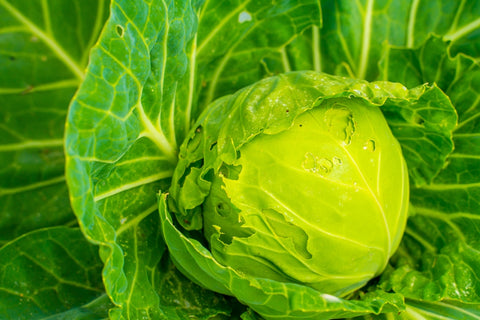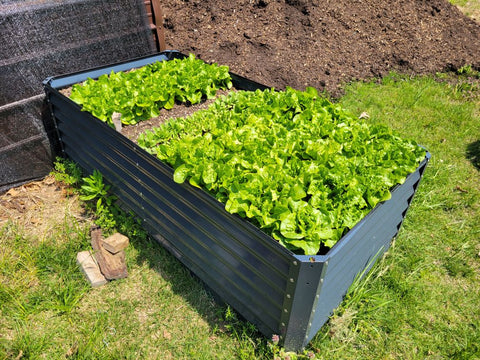Winter brings a serene beauty to the garden, with frost-kissed landscapes and a tranquil hush settling over the greenery. However, beneath this wintry facade lies a hidden challenge: cold months pests, and diseases that can threaten the health of your cherished plants. In this blog, we embark on a journey through the winter garden, uncovering the adversaries that thrive in the cold and exploring effective strategies to keep your plants robust and thriving. From identifying common pests and diseases to implementing preventive measures, let's delve into the art of nurturing a resilient garden through the icy embrace of winter.The following content also has some reference value for raised garden beds.

Winter's Stealthy Intruders: A Unique Introduction to Cold Months Pests and Diseases
As winter unfolds its enchanting spell, the garden undergoes a subtle transformation. Yet, amidst the delicate frost and dormant branches, a silent battle commences—the struggle against cold months pests, and diseases that can quietly undermine the vitality of your green haven. In this season of stillness, the resilience of your garden is put to the test. Join us as we unravel the secrets to fortifying your plants against the frosty challenges, ensuring they emerge vibrant and healthy as the spring thaw approaches.
Winter's Pernicious Pests: Identifying Cold Months Intruders
- Scale Insects: These often overlooked pests can thrive in winter, attaching themselves to stems and branches. Identify them by small, waxy bumps and employ horticultural oil sprays to control their presence.
- Aphid Ambush: Aphids can persist through the cold months, targeting weakened plants. Keep an eye out for clusters of these tiny insects and use insecticidal soap for effective control.
- Spider Mites: Cold, dry conditions create an ideal environment for spider mites. Look for stippling on leaves and employ water sprays or neem oil to deter these arachnid invaders.
Fungal Foes: Recognizing Common Cold Months Diseases
- Powdery Mildew: This fungal disease can thrive in cool, dry conditions. Identify it by the powdery white substance on leaves and treat it with fungicidal sprays or neem oil.
- Gray Mold (Botrytis): Botrytis can attack weakened plants in winter, causing a grayish mold on leaves. Remove affected parts promptly and ensure proper ventilation to deter their spread.
- Root Rot: Wet, cold soils can lead to root rot. Look for wilting and discoloration of leaves and adjust watering practices to prevent excess moisture around the roots.
Winter-Wise Plant Selection
- Resilient Varieties: Choose plant varieties known for their resistance to winter pests and diseases. Research and consult local nurseries to discover species that thrive in your specific climate.
- Diverse Planting: Create a diverse garden ecosystem that includes plants with natural pest-repelling properties. Companion planting can deter pests and enhance overall garden
Protective Mulching Magic
- Insulating Barrier: Mulching is not only about temperature regulation but also acts as a protective barrier against pests. Apply a layer of mulch to discourage overwintering pests from reaching the soil and emerging in spring.
- Beneficial Mulch: Consider using organic mulch that decomposes over time, enriching the soil with nutrients and fostering a healthy microbial environment.
Tactical Pruning for Health
- Winter Cleanup: Prune away dead or diseased branches during late fall or early winter. This minimizes hiding spots for pests and removes potential breeding grounds for diseases.
- Open Canopy: Proper pruning encourages air circulation, reducing the risk of fungal infections. Aim for an open canopy structure that allows sunlight to reach all parts of the plant.
Garden Sanitation Protocols
- Leaf Litter Cleanup: Fallen leaves and debris can harbor pests and diseases. Regularly clean up leaf litter to eliminate potential hiding spots and reduce the risk of fungal infections.
- Tool Sterilization: Practice good tool hygiene by regularly sterilizing your gardening This prevents the inadvertent spread of diseases and pests from one plant to another.

Vigilant Monitoring and Timely Treatment
- Scouting for Signs: Regularly inspect your garden for any signs of pests or diseases. Early detection allows for prompt intervention, preventing the spread to other plants.
- Natural Remedies: Embrace natural remedies such as neem oil, diatomaceous earth, and beneficial insects to control pests organically without resorting to harsh chemicals.
Winterizing Garden Beds
- Cover Crops: Planting cover crops in vacant garden beds helps suppress weeds and disrupt the life cycles of pests. This practice enhances soil health and resilience.
- Protective Covers: In extreme cold, use frost blankets or row covers to shield plants from freezing temperatures. This protective layer also discourages pests from settling in.
Knowledge is Power: Consult with Experts
- Local Expertise: Seek advice from local extension services, horticulturists, or master gardeners. They can provide valuable insights into specific pests and diseases prevalent in your region and recommend tailored solutions.
- Community Engagement: Connect with fellow gardeners through local gardening clubs or online forums. Sharing experiences and knowledge creates a collaborative network that strengthens the collective defense against pests and diseases.

Conclusion: Fortifying Your Winter Haven Against Adversaries
Winter may be a time of hushed tranquility, but beneath the frosty facade, a dynamic struggle unfolds. By understanding and addressing the challenges posed by cold months pests and diseases, you empower your garden to weather the winter and emerge resilient and vibrant in the warmer seasons ahead. Nurturing a garden through the chill requires a blend of vigilance, strategic planning, and a touch of seasonal wisdom. As you embark on this winter gardening adventure, let the resilience of your plants mirror the strength within you—a shared commitment to guarding the vitality of your green haven against the stealthy intruders of the cold months.









